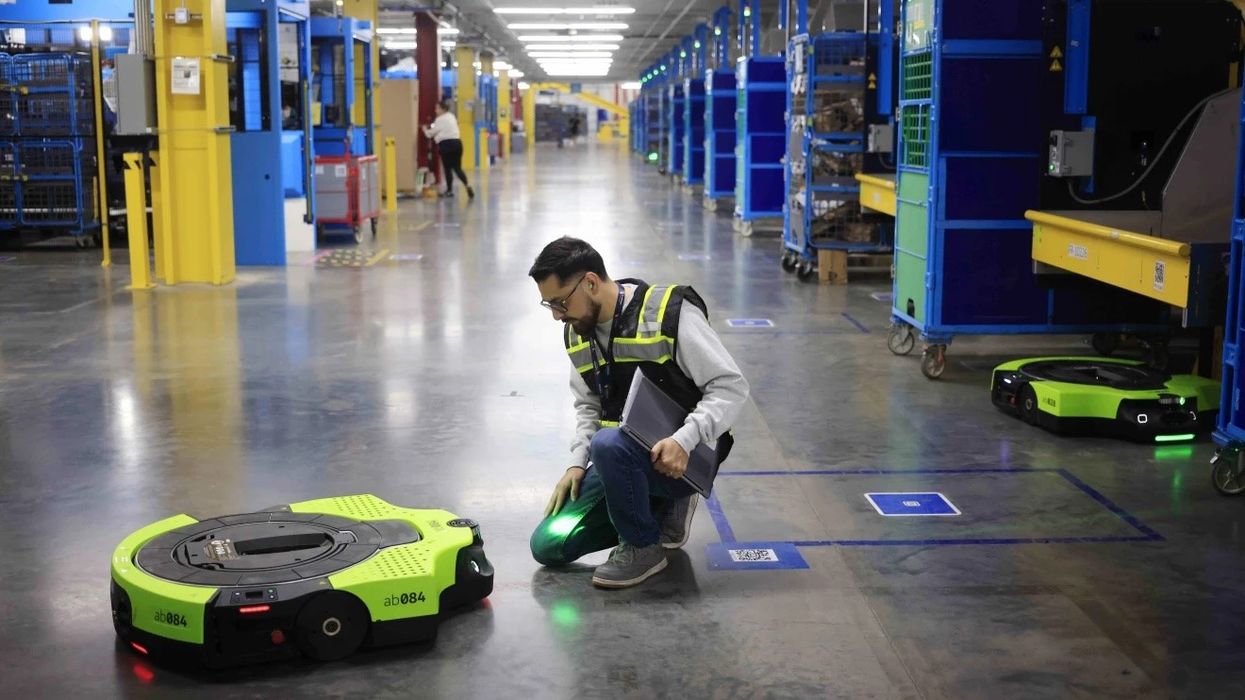Mega-retailer Amazon says its newest fulfillment center, located in Shreveport, Louisiana, uses 10 times more robots than previous warehouse designs, and relies on artificial intelligence (AI) to direct the eight different models deployed in its bustling operation.
“Over the years, we’ve built and scaled the world’s largest fleet of industrial robotics that ease tasks for employees and improve operational safety while creating hundreds of thousands of new jobs along the way,” the company said in a blog post Wednesday. “For the first time, we have introduced technology solutions in all key production areas at the site, meaning our employees will work alongside our growing fleet of robotic systems seamlessly in a way that wasn’t possible until now.”
The Shreveport site spans five floors and more than 3 million square feet—equivalent to 55 football fields—making it one of Amazon's largest sites. It will employ 2,500 employees once it’s fully ramped up.
According to Amazon, that facility relies on eight different robot models:
- The technology at the center of the huge building is called Sequoia, a “multilevel containerized inventory system” that can hold more than 30 million items, making it five times bigger than Amazon’s first deployment of that system in Houston, Texas.
- As inventory and packages move through the facility, Robin, Cardinal, and Sparrow—an AI-powered trio of robotic arms—sort, stack, and consolidate millions of items and customer orders. The latest version of Sparrow uses computer vision and AI systems that give it the versatility to handle over 200 million unique products of all different shapes, sizes, and weights.
- And Proteus, which Amazon calls its “first fully autonomous mobile robot,” navigates carts of packages to the site’s outbound dock so they can be loaded into trucks, while safely moving around employees in open spaces. The remaining three robot models include larger AMRs called Hercules and Titan and a packaging automation system that creates custom-sized packages to fit each order’s dimensions.
Although the increased automation allows the facility to handle more orders than older sites, Amazon insists it is not replacing workers’ jobs. “As we deploy this new generation of robotics across our network, we expect our headcount to continue to grow and we’re really excited by how this technology also creates more opportunities for skilled jobs. In fact, our next-generation fulfillment centers and sites with advanced robotics will require 30% more employees in reliability, maintenance, and engineering roles,” the company said.
According to Amazon, it trains workers for skilled jobs by helping them earn certifications through a corporate “Career Choice program” and a “mechatronics and robotics apprenticeship” that provides hourly wages up to 40% higher than entry-level roles.
















